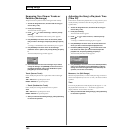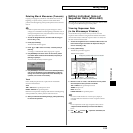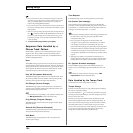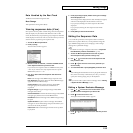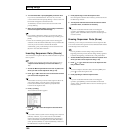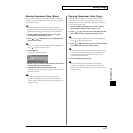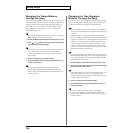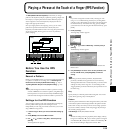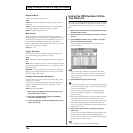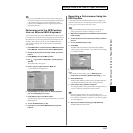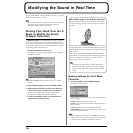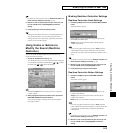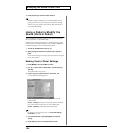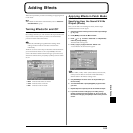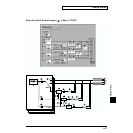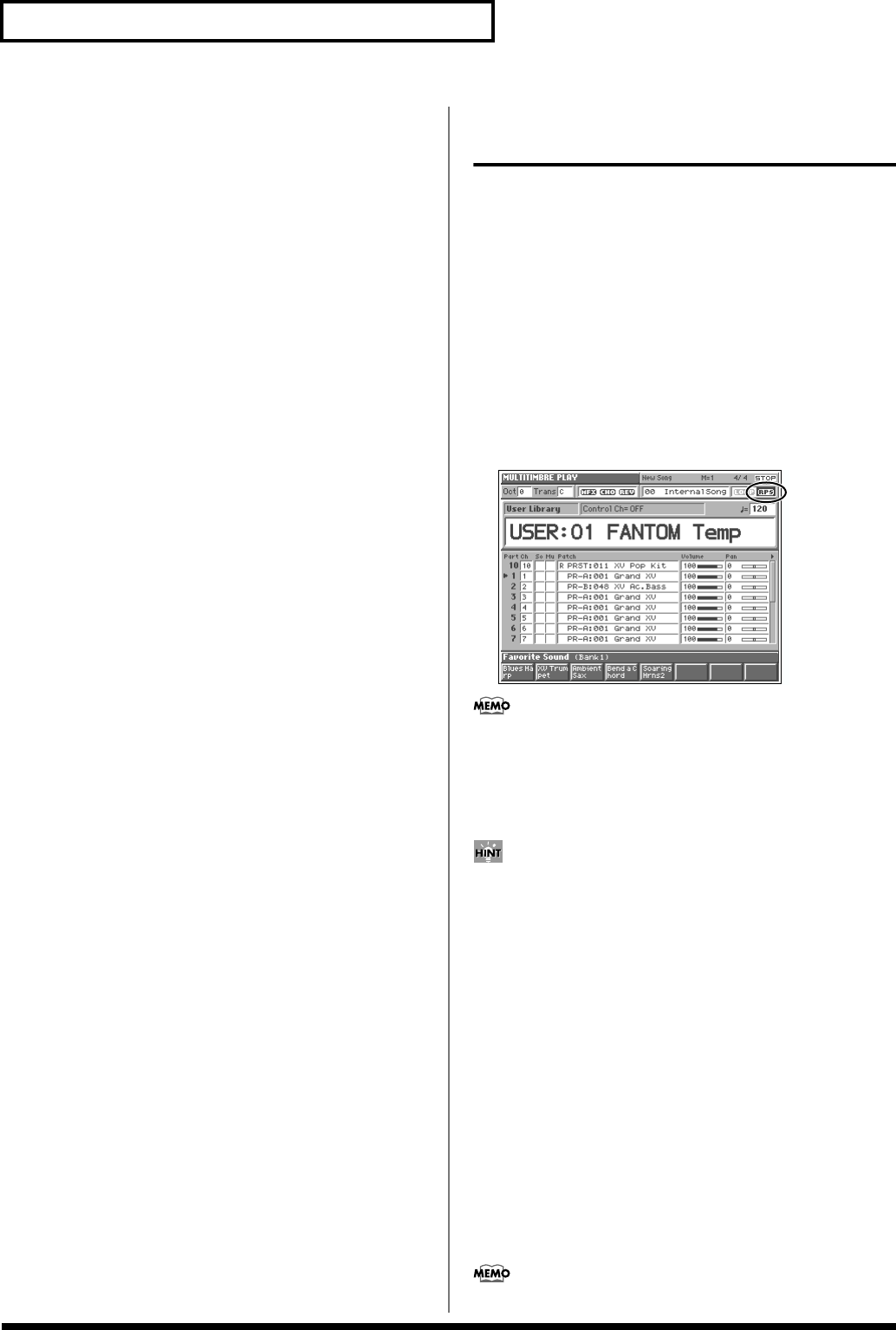
160
Playing a Phrase at the Touch of a Finger (RPS Function)
Playback Mode
Specify how the pattern will be played.
Value
LOOP1: The pattern will play back repeatedly as long as the key is
held down.
LOOP2: The pattern will play back repeatedly. To stop playback,
press a Stop Trigger key or press the same key once again.
ONCE: The pattern will play back once.
Mute Group
This function lets you prevent patterns of the same group from
sounding together. For example, a fill-in and bridge should never be
played at the same time, and to ensure that this does not occur, you
can set the fill-in and bridge to the same mute group number.
Thirty-one mute groups can be specified. Select “OFF” if you do not
want to use a mute group for a pattern.
Value: OFF, 1–31
Trigger Quantize
This parameter specifies how pattern playback is to begin when a
key is pressed during song playback or recording.
Value
REAL: The pattern will begin playing at the moment you press the
key.
BEAT: If the song is being played or recorded, the pattern will begin
playing at the beginning of the next beat if you press the key in the
middle of the beat.
MEASURE: If the song is being played or recorded, the pattern will
begin playing at the beginning of the next measure if you press the
key in the middle of the measure.
Velocity Sens (Velocity Sensitivity)
Turn this “OFF” if you want the pattern to play back at the volume
at which it was recorded.
If you want to vary the pattern playback volume according to the
strength with which you pressed the key, select either “LOW,”
“MID,” or “HIGH.”
Value: OFF, LOW, MID, HIGH
7. When you press [8 (RPS)] to assign a check mark (✔), the
RPS function will be turned on.
8. When you are finished making settings, press [EXIT] to
return to the Song Edit screen.
9. To save the settings you made, press [2 (Save)] to save the
song to disk (p. 135).
Using the RPS Function While
You Perform
Normally, when playing patterns individually, the song containing
the patterns must be loaded into internal memory. However, when
using the RPS function to play back patterns, you can use Quick
Play.
1. Make sure that the preparations for using the RPS function
have been made correctly.
2. Access the PLAY screen for the mode in which you want to
perform.
3. Use [CURSOR] to move the cursor to “RPS” in the upper
part of the screen, and press [INC].
The RPS function will be turned on, and you will be able to
perform using RPS.
fig.12-03
If you save the song in MRC Pro song format when the RPS
function is turned on, this state will also be saved. This means
that you will always be able to perform using RPS simply by
selecting that song.
4. Press [STOP/PLAY] to play back the song.
• You must play back the song if you want patterns to play back in
synchronization with the song, or if you want multiple patterns
to play in synchronization.
• If the song is not playing, the pattern will begin playing the
instant you press the key, regardless of the Trigger Quantize
parameter setting.
• The pattern will be played back according to the time signature
of the song (beat track). This means that if the phrase track
contains no sequencer data, the song will not play, and it will not
be possible to play back patterns in synchronization. In such
cases, you can insert several blank measures into a phrase track,
and play them as a loop.
5. Press a key to which a pattern is assigned, making the
pattern play.
If you want to stop playback midway through the pattern, press
the Stop Trigger key. Alternatively if the Playback Mode
parameter is set to “LOOP2,” you can stop the pattern playback
by pressing the same key once again.
Up to eight patterns can play back simultaneously.



